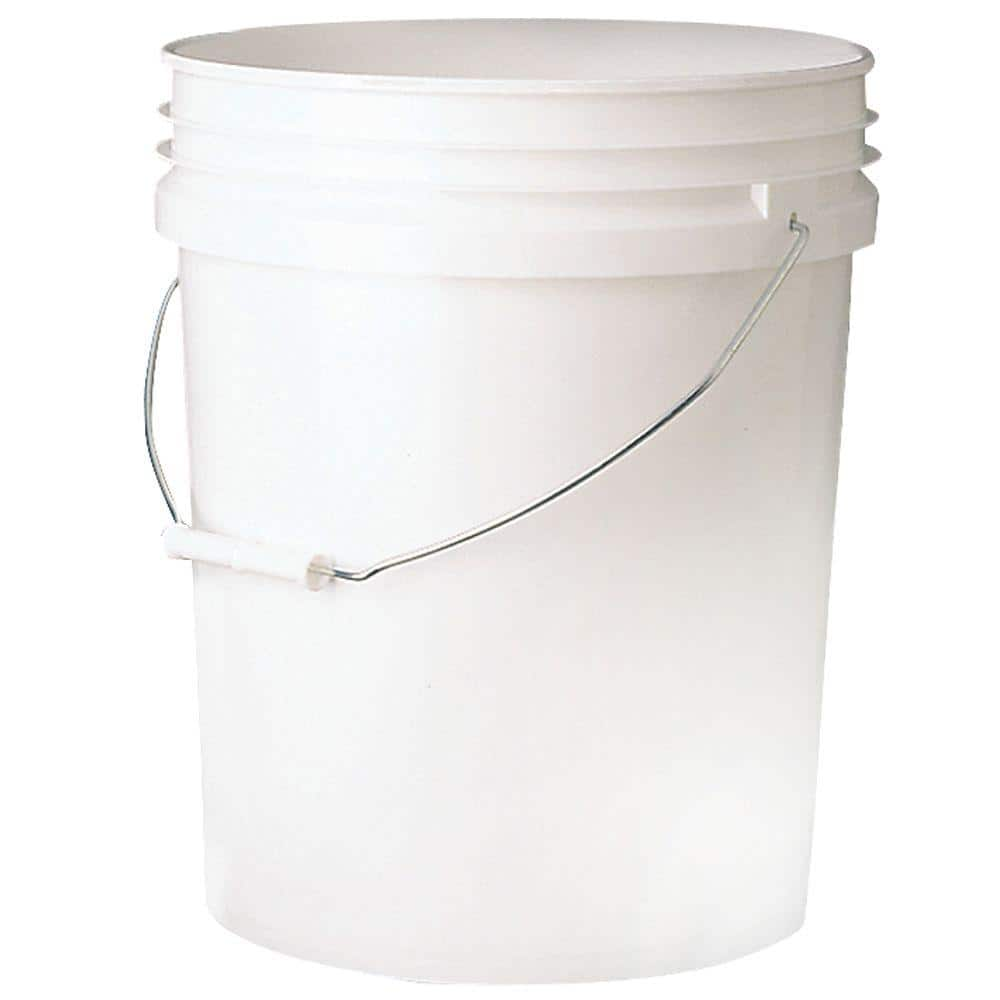Types of Concrete Paint Applicators

Last updated September 7, 2023
A fresh coat of paint can transform the look of a concrete floor. Painting concrete may appear to be a daunting task, but this material can be painted easily. The key is your choice of durable tools and products for the task. This guide will introduce you to the types of applicators you can use for your concrete painting project.
Table of Contents
Concrete Surfaces That Can Be Painted
How to Choose Primer for Painting Concrete
How to Choose Paint for Concrete
Painting Concrete with a Brush
Painting Concrete with a Roller
Painting Concrete with a Paint Sprayer
Concrete Surfaces That Can Be Painted
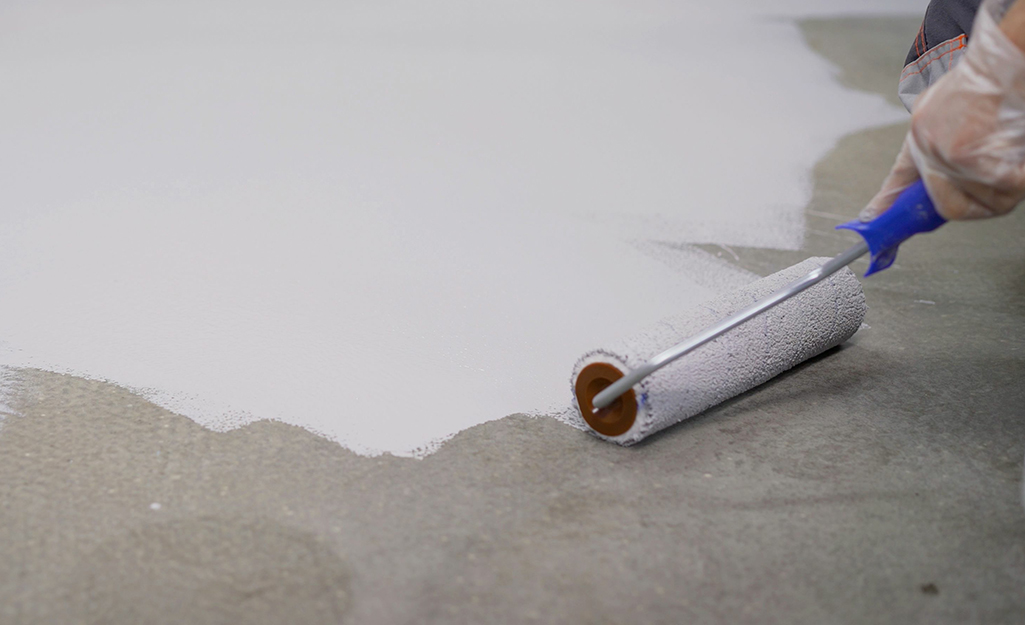
Know how to identify concrete surfaces in your home that are ready for a new coat of paint.
- The concrete
surface is clean and free of cracks, chips and other damage. - The surface is dry and does not contain any trapped moisture. One way to check is to tape a piece of clear plastic to the surface and leave it there for 24 hours. If condensation forms under the plastic after that time, the surface is too damp for painting.
- Any efflorescence – white powder often found on damp concrete – should be cleaned up before painting concrete.
- The concrete surface is free of coatings or sealants that could keep the paint from bonding.
How to Choose Primer for Painting Concrete

Knowing how to paint concrete means taking steps to ensure the paint does not peel or flake off later. Priming the concrete is the first step of the project.
Applying primer first fills in any gaps or voids to create a smooth and uniform surface. The primer prolongs the life of the paint and assures proper adhesion. Because primer soaks into the surface, it also protects the concrete from long-term damage.
Primers come in tinted shellac, acrylic/latex and alkyd/oil base formulas for interior and exterior applications. There are primers that are made specifically for concrete or masonry, but your best bet is a universal primer that can be used on almost any surface.
How to Choose Paint for Concrete
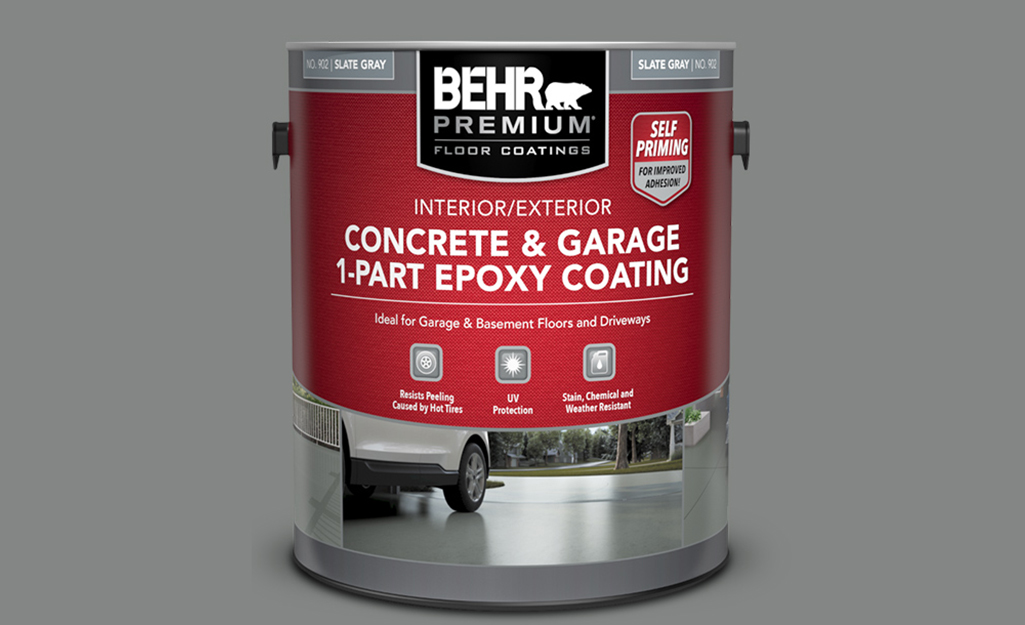
The best choices for painting concrete come down to acrylic latex paint and epoxy paint.
- Acrylic latex is familiar to any house painter, but it is just as suitable for painting concrete walls, floors and steps. It is less durable than epoxy paint, so you may have to apply another coat to a concrete floor every couple of years, though it lasts longer on walls.
- Epoxy paint is a more durable option that leaves behind a glossy surface. It is long lasting and ideal for concrete garage floors. Though more costly than acrylic paint, epoxy paint produces stain-resistant and solid results.
Painting Concrete with a Brush

When it comes to the task of how to paint concrete, the common paint brush is what you’ll need for vertical surfaces like walls and doing detailed work on concrete stairs and steps.
Paint brushes are suitable on concrete just like on any other surface. Thick, flat wall
brushes are designed for
flat surfaces, while angle sash brushes work well for corners and edges.
Look for durable nylon or polyester brushes when making a choice of these types of concrete paint applicators.
Painting Concrete with a Roller
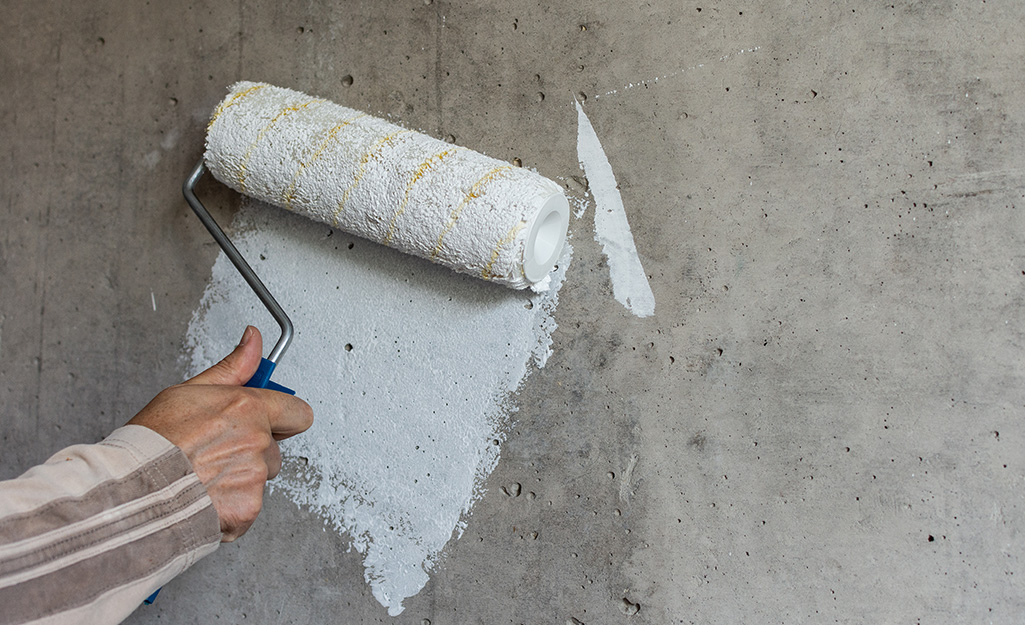
Rollers are the easiest way to apply paint evenly to floors and walls.
The best paint roller for concrete uses a 1/2- to 3/4-inch-thick nap. The nap is another name for the fabric paint roller cover and the thicker the nap, the more paint it holds to fill cracks and crevices. A thick nap is specifically made to apply paint cleanly to even a rough concrete surface.
Paint roller frames that accommodate the nap you plan to use come in two common sizes, 4 inches and 9 inches. Another option is a paint roller with a larger
frame, or yoke. These are commonly 14 to
18 inches in width
and are primarily for industrial use. They cost more, but you can get the job of
painting concrete project done in less time.
Painting Concrete with a Paint Sprayer
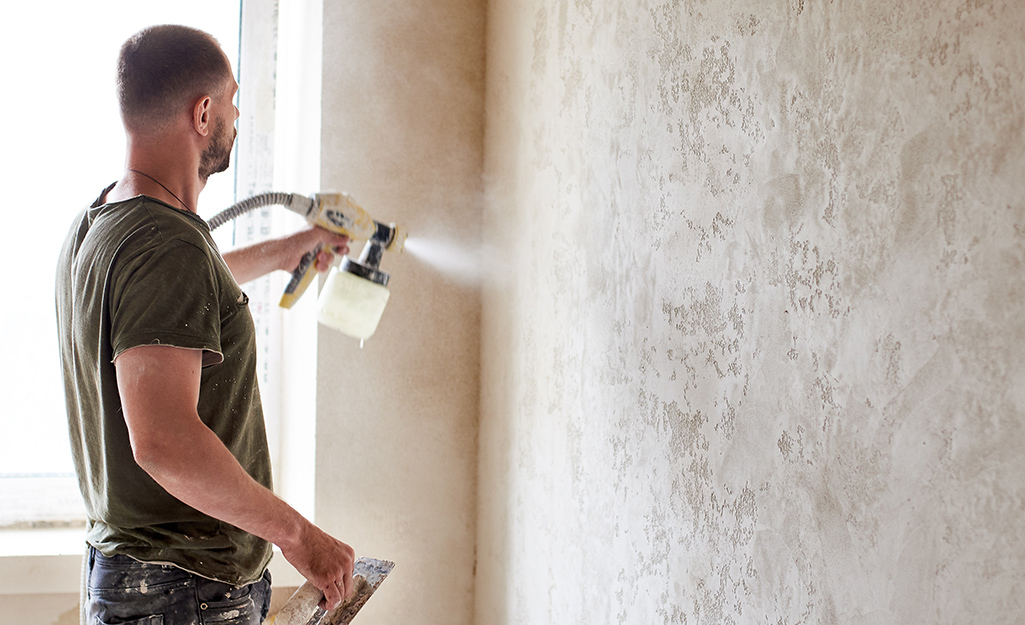
The most convenient means of painting concrete, particularly when it comes to large or uneven concrete surfaces, is with a paint sprayer.
Look for a pump sprayer with a double-regulated pressure tank and an oil and moisture separator. This will ensure your paint will come out smoothly with a clean finish. Ideally, your pump sprayer should have 20 psi fluid pressure and 40 to 60 psi air pressure and an E tip with a 3/8-inch ID material hose.
Airless paint sprayers are for more heavy-duty projects. Make sure to use these types of concrete paint applicators with at least a pressure of 1800 to 2400 PSI, a flow rate of 1/2 gallon per minute and a 0.013- to 0.017-inch tip.
The chemicals in paints like acetone and benzene can be harmful if you come into contact with or inhale the chemicals while spraying. Wearing a mask and eye protection is recommended when using a paint sprayer on concrete or any type of surface.
Use these types of concrete paint applicators to upgrade the appearance of the surfaces in your home. Download The Home Depot Mobile App to search for the supplies you need when it is time to begin your concrete painting project.





